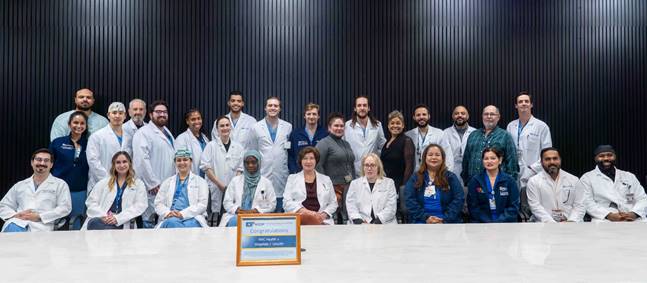A new study by researchers from Montefiore’s Albert Einstein College of Medicine has found that a rare genetic mutation that can lead to serious heart problems is much more common among people of Dominican descent than previously known.
The study of more than 12,000 Hispanic and Latino adults from across the country found that people of Dominican heritage were around ten times more likely to have a genetic mutation which causes the condition known as cardiac amyloidosis than other Hispanic groups. Dr. Priscilla Duran-Luciano, a postdoctoral research fellow in cardiovascular epidemiology leading the study, told the Bronx Times that of the participants with Dominican heritage more than 90% lived in the Bronx.
With the Bronx and Upper Manhattan having some of the highest concentrations of Dominican immigrants in the United States, Montefiore’s new study has significant implications for people living in the borough.
“ This study is important because we not only identify the mutation, but we also linked it to the DNA itself,” Duran-Luciano said. “It’s coming from this heritage— the ancestry that you have— and that’s something people wouldn’t do at the clinical level because doctors are not gonna analyze the DNA of everyone.”
In cardiac amyloidosis, an excess of protein builds up in the heart, causing the muscle to stiffen and struggle to pump effectively, according to Duran-Luciano. Over time, this buildup can weaken the heart and lead to heart failure.
Until now, the mutation has mostly been studied in African American populations, where it appears in about 3 out of every 100 people. But the new study found nearly the same rate among Dominicans — 2.6 percent of participants carried the mutation.
Scientists say the finding is linked to African ancestry, which is a significant part of Dominican heritage. While Hispanic and Latino people are often grouped together in health research, the study demonstrates that their genetic backgrounds can be very different — and so can their health risks.
Duran-Luciano said that the disconnect between race and DNA ancestry has likely led Dominicans to be overlooked as an at-risk population.
“ The reality is that you can be light skinned, but you could have high percentage of African ancestry on your DNA,” Duran-Luciano said. “It’s just that it’s not as [visibly] present as darker skin. At the clinical level, we don’t have ancestry as a variable in your medical record— what we have is race.”
This means that even though a patient may have a higher percentage of African ancestry, some doctors may look at a self-reported race like “Hispanic/Latino” and not associate that patient with a higher risk for cardiac amyloidosis because it has historically been studied in African American or Black individuals.
The heart condition caused by the mutation is already often missed by doctors because its symptoms look like other, more common types of heart disease. However, Duran-Luciano stressed that the causes of cardiac amyloidosis are entirely genetic and cannot be treated or cured with lifestyle changes alone. But with medical advances, where cardiac amyloidosis used to require a heart transplant, treatments now exist that can slow the illness or prevent it from getting worse, if caught early.
Duran-Luciano said that because early detection can make a big difference in health outcomes Dominicans in the Bronx should know their risk.
“ I think it’s important to bring awareness to Dominicans in general in the population,” Duran-Luciano said. “Because I believe that patients have the right to advocate for themselves in clinics, in healthcare settings. But they cannot advocate for what they don’t know.”
This large study, according to Duran-Luciano, is among the first to measure how common the mutation is among Hispanic and Latino adults in the U.S., and it suggests that many Dominicans may be at risk without knowing it. Researchers say more work is needed to track how the mutation affects long-term heart health and to create screening guidelines that account for ancestry and heritage.
As medicine becomes more personalized, experts like Duran-Luciano warn that leaving out diverse populations from genetic studies could lead to dangerous blind spots in care. This study highlights how better representation can help close gaps and make sure life-saving treatments reach everyone who needs them.


























